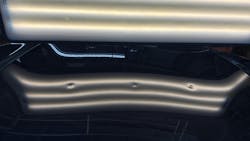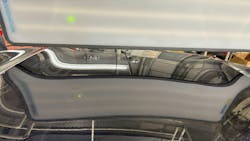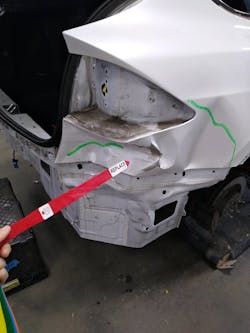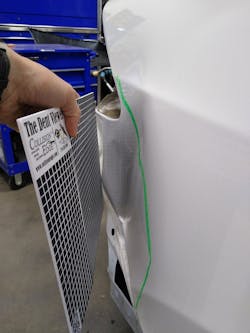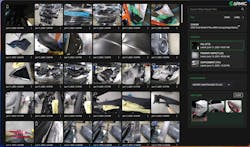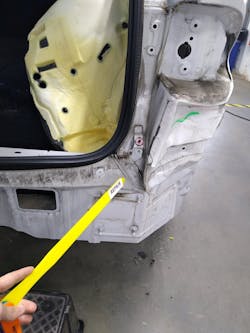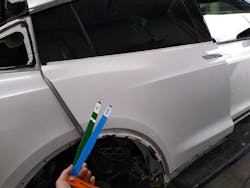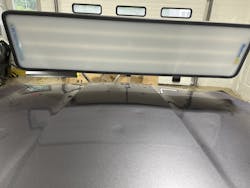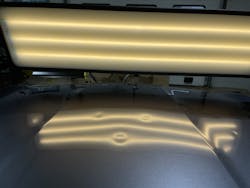It is such a cliché that it is practically the standard by which all other clichés are judged—a picture is worth a thousand words. And well-worn as it is, it’s a phrase that has never been more apt for the collision repair industry. Every shop takes photos at multiple steps of the estimating and repair process, maybe even at every step. But not all photos are created equal. Making sure those photos capture what they need to is vital to protecting your bottom line.
With the increasing cost of repairs due to necessary procedures like scanning and calibrations, insurers are seeking to reduce labor hours by reducing severity. And it makes it really easy to knock a few hours off an estimate if it’s not clear how severe the damage is. Shop owners should view photos less as a documentation and more like an illustration — making clear to anyone viewing it what needs to happen.
Telling the Story of What Happened with the Car
“The photos are really important because they’ve got to tell the story,” says Anthony McNee, blueprinter at Ultimate Collision Repair in Edison, New Jersey, and winner of the 2024 FenderBender Best Repair Planner/Estimator award. “So, if I’m looking at the car later on, or somebody else is looking at the car, you can tell exactly what happened with the car.”
Award-winning blueprinter or not, anyone can see the difference a photo can make. Photo quality isn’t so much of an issue anymore — most shop employees today are walking around with cameras in their smartphones which not so long ago would’ve qualified as high-end professional cameras.
The camera is only a tool, however. A paint gun also isn’t very useful if the person wielding it doesn’t know what they’re doing. The person taking that photo needs to ensure that it’s capturing the subject properly and showing what the photo needs to show.
Why Quality Photos Are Essential
“The reality is, when you upload photos to an insurance company, they look at them, and maybe I’ve invoiced for six hours, [but] the insurance company says, ‘Well, we don’t really see six hours. We see three hours,’” says Keith Egan, performance director with BETAG North America. “I think part of that is, we’re uploading photos that aren’t quality photos, enough to outline why it’s actually a six-hour dent.”
Lighting makes a huge difference in showing damage properly. No different than in any other photo, lighting adds depth and shows detail. In addition to offering lighting equipment for sale, BETAG includes education on proper utilization of light as part of its estimator training. Quality of light is certainly important, but it’s just as important to have light properly positioned, showing the full depth of the damage and not casting any distracting shadows. Without the proper lighting, Egan says, sometimes damage can even be missed entirely.
“You know, a body man will finish a car and send it to the paint department, and they’ll paint it, and then all of a sudden, there’s a dent in the door that was missed,” Egan says. “And the body man says, ‘Well, it wasn’t there when you sent it over.’ But in reality, it probably was, and it was missed in the estimating process.”
Egan emphasizes that BETAG’s estimator training is unlike some other, more traditional, training out there. It places importance on assessing damage, taking good photos, and using the right light to take those photos. That helps to “tie together” estimators and technicians, increasing efficiency and making sure everyone has what they need to do the job and with the proper time to do it.
“If I write something for eight hours, and I accept four hours after negotiating, now what’s happening is I’m going to my technician and saying, ‘OK, we got paid four hours,” says Egan. “And automatically in that technician’s mind, for efficiency, especially in a dealership group, he’s thinking, well now I have to fix it in two hours to make money?”
Looking at it From Another's Point of View
McNee knows as much about estimating and repair planning as anyone, and taking good photos has become an increasingly important part of that process. And it’s about more than just the estimator; it’s team-wide. As part of using photos to tell the story, “You have to look at it from somebody else’s point of view,” McNee says.
As opposed to, say, the technician, the estimator knows where the part came from on the car, where it was broken off. Someone else may not know that, so the photos need to reflect that part of the story.
“Maybe put the part next to where you took it off the car and take the photo,” McNee says. “Try to make it as simple as you can. Try to make your photos kind of like one after another.”
McNee says his shop also utilizes tools and visual aids of sorts to help illustrate damage. Dent boards offer a comparison of scale for dents, making them instantly clearer in photos. They also use color-coded pointer sticks that indicate where something needs to be repaired or where something needs to be replaced.
“Anybody looking at the photos can tell exactly what we’re looking at and even point to the damage,” says McNee. “... So if I’m looking at the car later on, or somebody else is looking at the car, you can tell exactly what happened with the car, whether we replace the part, repair the part, paint the part, you have to be able to tell exactly what happened with the repair of the car.”
Organize Photos to Make them Even More Useful
Another tool in McNee’s arsenal is an app called Carmic. While the app doesn’t help take better quality photos, per se, it helps organize photos and make them even more useful. Drawing heavily on AI technology, Carmic allows users to categorize not only photos but also documents for each stage of the repair. Photos are even searchable, as AI can detect whether it’s looking at a wheel or a bumper. It’s an app that can go on every employee’s phone so everyone is working off the same information.
Sergio Palma is the creator of Carmic, and solving the problem of how collision repair shops organize and take photos is one he’s been working on for roughly two decades. “It’s ‘No photo, no pay,’” says Palma, who has worked closely with the team at Ultimate Collision to ensure the platform meets their needs.
“The estimators, they have 200, 300, maybe 400 pictures at times,” Palma says. “My platform really helps facilitate getting those pictures in, but they might not all go to the insurance company, and many don’t. A lot just stay internal; it’s basically liability or just maybe understanding a process, because maybe a tech is working on a car they don’t usually work on, and they want to do some before and after, just so they can remember how to put something back together.”
Wherever you are in how you’re taking and using your photos, there is likely something that can be improved upon, whether it’s using better lighting, using technology to better organize and share photos, or being more thorough in what gets documented. Because while a picture may be worth a thousand words, it could also be worth a thousand dollars — or more.
About the Author
Todd Kortemeier
Todd Kortemeier is former editor of FenderBender magazine and started writing as a contributor in 2024.
